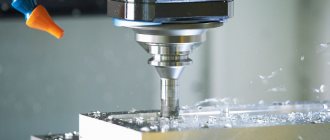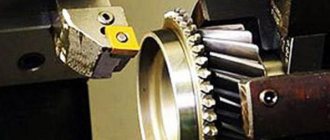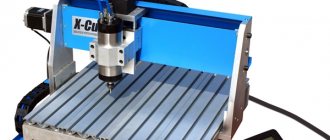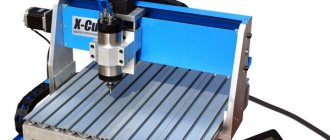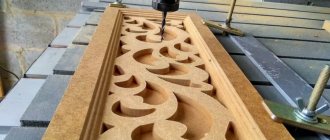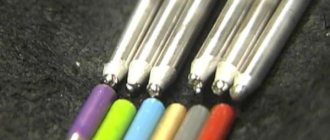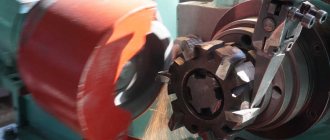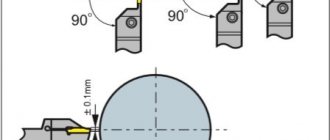Spread the love
Titanium and its alloys are increasingly used in the aerospace and biomedical fields, which take advantage of its unique properties. However, machining titanium also presents unique challenges faced by engineers accustomed to machining other metals. Here we'll look at why machining titanium is so difficult and look at the different techniques that can be used to get the best results when machining titanium.
WHY IS TITANIUM SO POPULAR
While aluminum and aluminum alloys were previously the materials of choice in the aerospace industry, titanium and titanium alloys are increasingly being used in new aircraft designs. These materials are also used in the biomedical industry. Reasons for their popularity include light weight, high strength, excellent fatigue performance and high resistance to corrosive environments, lack of rust and degradation. Titanium parts last longer and provide better performance and results than parts made from other metals and materials.
Features of connecting titanium products and their elements
If a titanium product acts as a structural element, then joining parts made of titanium alloys allows the use of the following methods:
- welding;
- soldering
- mechanical connection using rivets
- connection using bolted fastening.
The main connection method is welding, which is a conventional industrial technology. To ensure the strength of the weld, the elements are connected in an inert gas environment or special oxygen-free fluxes. Also for this purpose, the seam is protected using various protective elements. The interaction of molten titanium with such chemical elements as hydrogen, oxygen and nitrogen contained in the air mixture when heated leads to growth of the metal grain, a change in its microstructure and brittleness of the weld. Welding work is performed at high speed.
There is also a method of welding in a controlled environment, which is used to perform jobs that require a lot of responsibility. If it is necessary to connect small elements, they are placed in special chambers filled with inert gas. In the case of connecting larger elements, welding work is performed in special hermetically sealed rooms. Welding titanium is a responsible job that is entrusted exclusively to trained specialists who have the necessary practical experience and skills.
Titanium soldering is used in cases where welding is impossible or impractical. It is also complicated by chemical reactions. Titanium in the molten state exhibits high chemical activity and is firmly bound to the oxide film formed on the surfaces of the workpiece. Most common metals are unsuitable as solder for joining titanium elements; only pure aluminum and silver are used for these purposes.
The mechanical connection of titanium elements using rivets and bolts is also carried out using special materials.
In most cases, the rivets are made of aluminum, and the bolts used are coated with silver or synthetic Teflon. This is due to the fact that when screwed, titanium exhibits its sticking property and lifts up; as a result, the connections of the elements become unreliable and do not provide a strong fixation. Go to list of articles >>
WHY IS TITANIUM SO HARD TO MACHINE?
The very properties that make titanium such a useful and high-performance metal are also properties that can make it difficult to process. Just as with aluminum and aluminum alloys, up to 90% of the material may need to be milled and turned to produce the final part.
Titanium alloys have a low modulus of elasticity, which causes vibration during processing. This may lead to deterioration in the surface quality of the finished product.
Due to titanium's high tendency to work harden and the alloy's tackiness, turning and drilling produces long, continuous chips that can entangle the tool and make it difficult to operate. This virtually eliminates the possibility of automating titanium processing.
Despite these setbacks, there are methods that make machining titanium easier.
Purpose of titanium anodizing
During the anodizing process, a titanium product is covered with an oxide film, which is formed from the metal itself as a result of an electrochemical reaction.
Anodizing titanium products is also called anodic oxidation. If we compare anodizing in industrial production using special equipment and self-coating with an oxide film, then, of course, the second method is somewhat inferior in quality of the result. But nevertheless, metal processed at home acquires a number of undeniable advantages:
- The oxide film performs protective functions, preventing moisture from penetrating the metal base of the product. The barrier prevents the formation of corrosion, which extends the service life of household items made of titanium alloy.
- Anodizing titanium strengthens the surface of the product and makes it more resistant to various types of external damage.
- Metal products after anodic oxidation partially or completely lose their ability to conduct electric current.
- Cookware with an oxide coating can withstand prolonged heating, has non-stick properties and does not emit toxic substances during cooking.
- If a titanium product has undergone oxide treatment, this is not an obstacle to other types of processing through galvanization.
- Regulating the current strength and the components of the electrolytic fluid makes it possible to make the oxide coating not only more durable, but also more beautiful. The use of dyes will give the product an attractive appearance.
Anodizing titanium under production conditions allows for deeper processing of parts, but even at home you can achieve increased wear resistance of metal products.
HOW TO TREAT TITANIUM
Machining titanium requires coated carbide tools that will resist the stickiness of the alloy and break up long chips. The tool's coating also helps dissipate the heat generated during machining.
Maintaining low radial engagement is important to counteract the effects of heat generation and strain hardening tendencies. Increasing the number of flutes in end mills can help counteract lower feed per tooth to improve productivity.
Using high pressure coolant helps reduce heat and damage to the tool.
The techniques used when machining titanium can also help improve results. By using lift milling, an arc ending with a 45 degree chamfer, using an auxiliary relief tool design, varying the axial depth, and using a tool at least 70% smaller than the tool pocket, you can reduce tool damage and get better machining results titanium.
By carefully understanding the unique properties of titanium and adjusting your processing accordingly, you can achieve the best results for your tool and finished part.
Titanium alloys and aluminum alloys are similar in the following respects: Both types of metals are used to make aircraft structural components, and in both cases, a component may require 90 percent of the material to be milled before the part is finished. Many shops would probably like their metals to have more in common than this.
Titanium metal – resistance to acids and alkalis
Titanium metal should be considered a material of high corrosion resistance to oxidizing substances, among which are nitric, chromic acid and similar chemistry. However, high concentration non-oxidizing chemistry (hydrochloric, sulfuric acids) at high temperatures can cause corrosion of titanium.
Therefore, for high-temperature conditions, it is recommended to use corrosion-resistant titanium metal alloys (Ti-0.15Pd, Ti-Ni-Pd-Ru-Cr (AKOT) and others). The same applies to the action of highly concentrated alkalis and high-temperature chloride solutions.
Unlike stainless steel and copper alloys, titanium metal is not susceptible to pitting, stress cracking, or corrosion in general. However, titanium metal is susceptible to crevice corrosion under the influence of highly concentrated solutions at high temperatures. Here, accordingly, corrosion-resistant titanium alloys (Ti-0.15Pd, AKOT and others) again become relevant for use.
Titanium, as a metal, is susceptible to stress cracking only under certain special conditions. The erosion resistance of commercially pure titanium significantly exceeds that of copper alloys. Compared to other popular metals, titanium has a higher electrical potential.
Therefore, if titanium metal is in contact in an electrically conductive solution with other metals having a lower potential (copper alloys and aluminum), the corrosion of other metals is accelerated (galvanic corrosion effect).
Diagram for the method of anodizing a titanium surface: 1 - vessel for electrolyte; 2 — cathode (aluminum); 3 — anode (titanium); 4 - electrolyte; 5 - ammeter; 6 - voltmeter; 7 - DC source
Under the conditions of contact of austenitic stainless steels (SUS304 and SUS316) with titanium metal at room temperature, galvanic corrosion problems generally do not occur. The reason is the smaller potential difference between the noted steels and titanium.
Regarding the reactivity of the metal towards gas, titanium has a strong affinity for gases:
- oxygen,
- hydrogen,
- nitrogen.
Accordingly, care must be taken regarding operating conditions of use, particularly temperatures and pressures. Titanium exhibits corrosion resistance to moisture-containing chlorine gas, but reacts strongly to dry chlorine gas.
Keep radial engagement low
One of the most important tasks when processing titanium is heat removal. In this metal, a relatively small amount of heat generated during processing is dissipated along with the chips. Compared to machining other metals, when machining titanium, a greater percentage of the heat goes into the tool. Because of this effect, the choice of radial engagement dictates the choice of surface velocity in that metal.
Titanium processing. Low radial engagement
The graph shows that a relatively low surface speed is required to completely cut the slots, i.e. engage 180 degrees. But reducing radial engagement reduces the time the cutting edge generates heat and gives the cutting edge more time to cool before entering the material on the next revolution. Thus, by reducing the radial engagement, the cutting speed can be increased while maintaining the temperature at the cutting point. For finishing applications, a milling process consisting of a very small arc of contact with a sharp, ground cutting edge, high cutting speeds and minimal feed per tooth can provide exceptional results.
Tool selection for turning titanium alloys
The difficulties of processing titanium products on a lathe can be solved by wisely selecting a cutting tool that is used in accordance with the cutting mode. For preliminary turning, round or square plate-shaped cutters with a large radius tip, made from a special alloy without any coating, should be used. For complex machining, the use of chip breakers is recommended to reduce cutting force and provide improved chip control.
The intermediate stage is performed with cutters with a small radius, which should be less than the rounding radius of the workpiece. In this case, the equipment can be uncoated or with PVD coating. Finishing work is carried out using equipment with very sharp cutting edge geometry and a small radius. For work, it is better to choose cutters with a PCD coating made of polycrystalline diamond, which ensures speed of processing and wear resistance of the equipment.
Increase the number of cutter teeth.
Commonly used end mills have four or six flutes. In titanium this may be too little. A more effective number of grooves may be ten or more.
Large number of edges for machining titanium
Increasing the number of flutes compensates for the need for low feed per tooth. The close flute spacing of a 10-tooth tool is too close for chip clearance in many applications. However, productive milling of titanium already favors low radial depth (see Tip #1). The small chips resulting from this make it possible to use an end mill with a higher number of flutes for increased productivity.
How to solder titanium parts?
Soldering is used in conditions where titanium cannot be welded with other metals or when welding is difficult due to its complex structure. Metal soldering is accompanied by the peculiarity of performing it under vacuum conditions or in an inert gas atmosphere. It is recommended to use the following solders for soldering titanium:
| Marking of solders for soldering | Soldering temperature, C° |
| Ag-3Li | 800 |
| Ag-7.5Cu-0.2Li | 920 |
| Ag-28Cu-0.2Li | 830 |
| Ag-20Cu-2Ni-0.2Li | 920 |
| Ag-20Cu-2Ni-0.4Li | 920 |
| Ag-9Ga-9Pd | 900 |
| Ag-27Cu-5Ti | 840 |
| Ti-15Cu-15Ni | 930 |
| Ti-20Zr-20Cu-20Ni | 890 |
| Ti-25Zr-50Cu | 890 |
Milling with interference.
“Lift milling” is a familiar term. That is, do not feed the cutter so that the edge moves through the material in the same direction as the tool. This machining approach, known as “conventional milling,” results in chips that start out thin and then thicker. When the tool collides with the material, frictional forces create heat before the material begins to pull away from the base metal. Thin chips cannot absorb and dissipate the generated heat, which instead enters the cutting tool. Then, at the exit of thick chips, the increased cutting pressure creates the risk of chip sticking.
Interference milling—or the formation of chips from thick to thin—begins with the cutting edge entering excess material and emerging onto the machined surface. In side milling, the tool attempts to “climb” through the material, creating thick chips at the entrance to maximize heat absorption and thin chips at the exit to prevent chip sticking.
Titanium processing. Interference milling
Milling a contour surface requires careful study of the tool path to ensure that the tool continues to engage excess material and thus exit the machined surface. Achieving this during difficult passages is not always so easy.
Tips for machining titanium
Reduce radial engagement to control heat
Titanium does not conduct heat, almost the opposite. It is very important to maintain low radial engagement. You must allow time for the cutting edge to be exposed to heat and allow time and clearance for the coolant to work.
Finishing titanium requires a very small percentage of the tool radius to be in contact (that is, little radial engagement), a ground cutting edge that is very sharp, a high cutting speed (at the high end of the range), and a very minimal feed per tooth.
If you need to cut a groove, try using a trochoidal toolpath rather than a full-width gripper. For full slots you will have to dial the rotation speed WAY back. This will depend on your instrument and coating, but can go down to tens of SFM.
Prevent tool from being pulled out
Sandvik's precision hydraulic chucks really hold the tool securely and prevent it from being pulled out...
Titanium machining typically involves enormous cutting forces, shock and vibration. They are also great for removing the tool shank from its holder. Even a small slip radically increases the depth of cut, which increases the cutting forces, resulting in more slip. This is a vicious circle and you must avoid it.
Use proper procedures with the collets to ensure they hold as tightly as possible. Keep everything clean and tighten the collets to optimum specifications.
Weldon shank holders are even more secure when pulled out, as are hydraulic cutter chucks.
Make thicker chips: lift milling
This initial thick part of the chip will carry away more heat. Removing heat from the chips is very important because the more there is in the chips, the less is left in the tool workpiece. The thin end of the chip is also less likely to weld to the cutter, so Climb Milling provides a double bonus when machining titanium.
Arc in section
This is a good strategy for many difficult-to-cut materials, such as stainless steel or high-temperature nickel alloys. The arc reduces impact as the tool enters the material for the first time. If you feed straight, your tool will often chip from impacts, and it won't last long after that.
Pre-milling of the chamfer at the end of the cut.
You can make an arc from the cut, like a cut on the surface of the material. But it's harder to make an arc out of something like the gap where the cutter comes out of the wall. Creating a 45-degree bevel at the end of the pass is a good way to minimize exit shock. Leaving this bevel may mean planning ahead and leaving material for the bevel to be machined later.
Select a tool with a much smaller diameter than the minimum pocket radius.
In the case of aluminum, we are accustomed to using a tool that has only a slightly smaller radius (diameter / 2) than the minimum inner radius of the pocket. This can result in the tool being heavily protected from coolant, which is unacceptable when machining titanium. Instead, select a tool whose radius (diameter/2) is no more than 70% of this minimum inner radius. This ensures that there is room for plenty of coolant.
Change the axial depth with each pass.
Titanium is dangerous, and the place where the tool wears the most is right at the top of the cutting zone. The interface where chips are produced. This wear is so severe that you will benefit greatly from varying the amount of axial engagement with each pass when machining titanium.
That's right, don't make 3 equal-depth passes to get to the bottom of your pocket. Make 3 passes, each pass a different depth.
Limit axial depth with thin walls and subtle elements.
Titanium's flexibility means it wants to vibrate and chatter. Thin walls and slender details only make the situation worse. Any time a wall is more than 8 times thick (or a thin piece has the same problem), you need to take extra care.
The best way to take care is to leave a large enough finishing allowance to account for the bend, and then make a finishing pass with a small axial depth of cut, but a large radial depth of cut.
Use high pressure coolant.
Remember that titanium is a very poor conductor of heat. Perhaps your oven conducts heat better, LOL!
It is difficult to remove heat from the work area. Left there, it will destroy our cutting tools and the thermal effects will make it difficult to maintain tolerances. So we need the best coolant setup we can get when machining titanium.
A high pressure coolant system really helps. Depending on the application, a through spindle can also be critical.
You may also find that increasing the coolant concentration is beneficial for titanium. It needs extra “juice” to lubricate and prevent chips from welding.
Use the correct feed and speed.
I often talk about balancing feedrate and spindle speed in the "sweet spot":
The sweet spot is not shown to scale because it varies from one material to another. Complex materials have very little sweet spot. The range of values that work is small. Accordingly, you need good feeds and speeds, preferably generated using a high-quality feed and speed calculator such as our G-Wizard.
Hey, if you don't believe good feed and speed matter, check out this G-Wizard customer who made a Titanium AR-15 lower receiver on a tiny CNC router.
Tough machine and tough equipment.
Here comes Titanium flexibility again. Because it's relatively flexible, you'll find that your settings need to be as tight as possible to reduce vibration and rattle. The stiffer your machine and the stiffer the work piece, the better for titanium machining.
Try Plunge Milling and HSM
Plunge milling is one of my favorite roughing paths for touching situations because it transfers the maximum possible cutting force through the tool axis, which is the stiffest part of the tool and (usually) the CNC machine.
The only real downside is that all the scallops mean that plunge routing is strictly a roughing strategy. You will need to do a finishing pass to get the walls smooth for machining titanium.
Smooth entry into the workpiece
In titanium and other metals, the durability of the tool is lost when there is a sudden change in force. The worst of these things often happens when the tool goes into the material. Feeding directly into the workpiece (as almost any standard tool path does) produces an effect similar to hitting a cutting edge with a hammer.
Titanium processing. Smooth entry into the workpiece
Instead, glide gently. To do this, create a toolpath that bends the tool in an arc into the material rather than inserting it in a straight line. When milling thick and thin tools, the entry arc of the tool path should follow the same direction (clockwise or counterclockwise) as the tool rotation. The arc entry path allows for a gradual increase in cutting force, preventing tool jerking or instability. Heat generation and chip formation also gradually increase until the tool fully enters cutting mode.
Using chamfers
Abrupt force changes can also occur at the output of the tool. As useful as thick-to-thin cutting is (tip #3), the problem with this method is that the thick-to-thin cutting suddenly stops when the tool reaches the end of the pass and begins to scrape the metal. An abrupt change causes an equally abrupt change in force, causing the tool to shake and possibly damage the surface of the part. To prevent such an abrupt transition, take precautions: First mill a 45-degree bevel at the end of the pass so that the tool sees a gradual decrease in the radial depth of cut.
Titanium processing. Using chamfers
Oxidation and nitriding of titanium
It's worth starting with titanium nitriding, since this type of processing is much more complex than oxidation. The technological process is as follows. The titanium product is heated to 850-950 degrees Celsius, after which the part must be placed in an environment with pure nitrogen gas for several days. After this, a film of titanium nitride is formed on the surface of the element, thanks to the chemical reactions that will occur during these days. If everything went well, a golden-colored film will appear on the titanium, which will be characterized by increased strength and abrasion resistance.
As for the oxidation of titanium, the method is very common and, like the previous one, belongs to the heat treatment of titanium. The beginning of the process is no different from nitriding; the part must be heated to a temperature of 850 degrees Celsius. But the cooling process does not occur gradually and in a gaseous environment, but abruptly and using liquid. In this way, it is possible to obtain a film on the surface of titanium that will be firmly bonded to it. The presence of this type of film on the surface leads to an increase in strength and abrasion resistance by 15-100 times.
Secondary tool relief
A sharp cutting edge minimizes cutting forces in titanium, but the cutting edge must also be strong enough to withstand the cutting pressure. A secondary relief tool design, in which the first positive zone of the cutting edge resists the forces and then the second zone falls away to increase clearance, accomplishes both of these goals. Secondary relief is common in tools, but in titanium in particular, experimentation with tools having different secondary relief designs may reveal unexpected changes in cutting performance or tool life.
Secondary tool relief
Change axial depth
At the depth of cut, the tool may be affected by oxidation and chemical reaction. Early damage can occur at this location if the tool is used repeatedly at the same depth. When making successive axial cuts, this damaged area of the tool can cause work hardening as well as lines on the part that are unacceptable for aerospace components, meaning that this surface effect may require early tool changes. To prevent this, protect the tool by varying the axial depth of cut for each pass, distributing the problem area to different points along the groove. In turning, a similar result can be achieved by turning the cone in the first pass and parallel turning in the subsequent one, which prevents the formation of recesses along the depth of cut.
Titanium processing. Different axial depths for cutters
Axial depth limitation
The 8:1 ratio is useful to remember when milling thin walls and unsupported parts in titanium. To avoid sagging pocket walls, mill these walls in successive axial steps instead of routing the entire depth of the wall in a single pass of the end mill. In particular, the axial depth of cut in each downward step should not exceed 8 times the wall thickness that will remain after these milling passes are completed. For example, if the wall thickness is 0.1 inch, the axial depth of cut for the milling pass adjacent to it should be no more than 0.8 inch.
Titanium processing. Axial depth limitation
Despite the depth limitation, this rule can be used to ensure productive milling remains possible. To do this, treat thin walls so that there is a shell of rough material around the wall, resulting in an element 3 or 4 times thicker than the final element. If the wall thickness is, for example, 0.3 inches, then the 8:1 rule allows for an axial depth of 2.4 inches. After these passes, reduce the axial depth to bring the thick walls to their final size.
Adjusting Processing Parameters
When processing such a heavy-duty material, three main parameters must be taken into account:
- working tool fixation angle;
- feed size;
- cutting speed.
If you adjust these parameters, you can use them to change the processing temperature. Under different processing modes, different parameters of these characteristics are observed.
For pre-processing with a cut of the top layer up to 10 mm, an allowance of 1 mm is allowed. To operate in this mode, the following parameters are usually set. Firstly, the fixation angle is from 3 to 10 mm, secondly, the feed dimension is from 0.3 to 0.8 mm, and the cutting speed is set to 25 m/min.
An intermediate option for processing titanium involves cutting off the top layer from 0.5 to 4 mm, as well as the formation of an even layer of 1 mm allowance. Fixation angle 0.5-4 mm, feed dimension 0.2-0.5 mm, feed speed 40-80 m/min.
The main processing option is to remove a layer of 0.2-0.5 mm, as well as remove allowances. The operating speed is 80-120 m/min, the fixation angle is 0.25-0.5 mm, and the feed dimension is 0.1-0.4 mm.
It is also very important to note here that mechanical processing of titanium on such equipment is always carried out only with the supply of a special cooling emulsion. The substance is supplied under pressure to the working tool. This is necessary in order to create a normal operating temperature.
Choose a tool much smaller than the pocket.
Because the tool absorbs heat in titanium, it needs clearance to cool. When milling a small pocket, the tool diameter should not exceed 70 percent of the diameter (or comparable size) of the pocket. Any less clearance than this risks essentially isolating the tool from the coolant, as well as trapping chips that might otherwise carry away at least some of the heat.
Titanium processing. Tool diameter relative to pocket
The 70 percent rule can also be applied to milling a tool along the top of a surface. In this case, the width of the element should be 70 percent of the tool diameter. The tool is offset by 10 percent to encourage chip formation from thick to thin.
High feed cutters
High-feed cutters, a tooling concept developed for machining tool steel in the die and mold industry, have been adapted to machining titanium in recent years. High feed cutters require a shallow axial depth of cut, but when operating at that shallow depth, the tool produces higher feed rates than more traditionally designed cutters.
High feed cutters
The reason is thinning of the chips. The key to a high feed router is an insert with a large radius bend on its cutting edge. This radius spreads chip formation over a large contact area at the edge. Because of the resulting thinning, at an axial depth of cut of 0.040 inch, the chip thickness can be only about 0.008 inch. In titanium, these thin chips overcome the low feed per tooth typically required for this metal. Chip thinning opens the way to higher programmed feed rates than would otherwise be possible.
